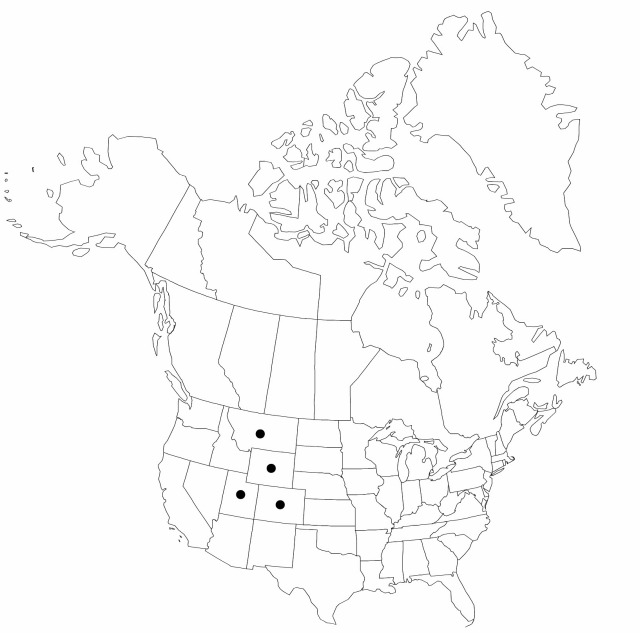Carex nelsonii
in P. A. Rydberg, Fl. Rocky Mts., 137, 1060. 1917.
Plants densely cespitose. Culms 15–30 cm, distally finely scabrous. Leaves 3–4 mm wide. Inflorescences: proximal bracts usually shorter than or, occasionally, equaling inflorescences; spikes contiguous, overlapping, forming dense terminal cluster or proximal spike sometimes distinct and separate, sessile or short-pedunculate, short-oblong, 10–12 × 5–8 mm; lateral 2–3 spikes pistillate; terminal spike gynecandrous. Pistillate scales blue-black to margins, lanceolate, shorter than, less frequently as long as, and as broad as perigynia, midvein same color as body, inconspicuous or lighter colored and conspicuous, apex acute. Perigynia ascending, yellow green, golden brown or if dark-brown with yellow margins, veinless, narrowly elliptic, 3.5–4 × 1.5–1.75 mm, apex gradually beaked, distally papillose; beak 0.8–1 mm, bidentate, occasionally serrulate. Achenes filling proximal 1/2 or less of perigynia.
Phenology: Fruiting Jul–Aug.
Habitat: Moist alpine meadows, rocky slopes
Elevation: 2900–3900 m
Distribution

Colo., Mont., Utah, Wyo.
Discussion
Carex nelsonii appears to be similar to the Asian C. oligantha Steudel.
Selected References
None.
Lower Taxa
"shortened" is not a number.
